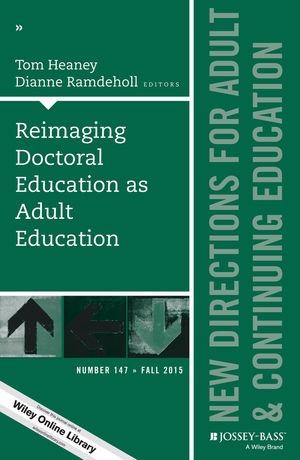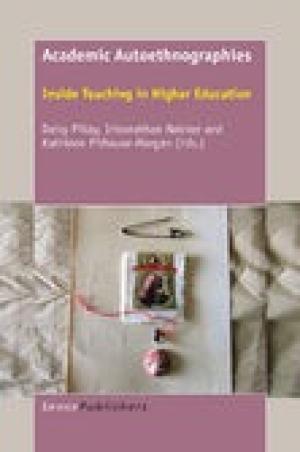Resources by Cynthia P. Stewart

This book answers the question “Why not?” to Robert Smith’s (professor of adult education in the doctoral program at Northern Illinois University) statement, “Higher education is not adult education” (1). There are nine chapters by contributors who place importance on adult education as a collaborative methodology within a doctoral program. Each contributor reflects on their own principles and practices for reimagining doctoral study for adult educators, faculty, and administrators within higher education. Many of the contributors give real life experiences either as faculty or students of a doctoral program at National Louis University. Tom Heaney (Chapter 1) shares how the cohort-based program provides a space for doctoral students to critically reflect as a group, take control of their own learning, and assume ownership of the curriculum for which they can negotiate with faculty. He views democracy within a doctoral program as “unleashing the power of we” which allows the students see themselves as agents of change through the collective voice of intellectual discourse. Building a democratic forum is not an easy task, but it requires trust, discipline, and confidence among doctoral students and faculty (11). Stephen Brookfield (Chapter 2) notes that there are four lenses through which practitioners within education view their thinking and actions: student’s eyes, colleagues’ perceptions, theory, and autobiographical experiences. He emphasizes that professors and instructors need to get into the habit of stating out loud the reasons why they are doing what they do: readings, participation in class, order of curriculum, and the evaluative process (17-18). Nadira K. Charaniya and Jane West Walsh (Chapter 5) reflect on their experience as doctoral students and how collaborative learning partnerships were central to their peer relationships. They recall five outcomes: (1) deep trust and respect, (2) the conscious selection of one another as learning partners, (3) mutual striving toward common goals, (4) different but complementary personality traits, and (5) the development of synergy (49). They include a detailed case of their own journey as collaborative research partners where they created the Collaborative Inquiry Metaphor Creation and Analysis Method (CIMCAM) which involves the use of metaphor analysis as a research analysis. They share through a graphic representation the five steps to their research methodology (53) as well as focused group dialogue of the visual metaphor process. The outcome is the shift of power between research facilitators and participants as a means of collaborative co-construction of knowledge (56). The volume is an easy read. Each chapter could provide insight for doctoral programs in any discipline. It could also be a useful resource within a school of theology even though the focus of the book is a doctoral program at a private non-profit higher education institution. The authors explore the question of why it is important to reimagine doctoral education as adult education. In the introduction the editor claims, “An obvious goal of adult learners is to find their own voice, to be heard in rational discourse with their peers, and to gain control over the day-to-day decisions that affect their lives” (5). The book underscores the point that collaborative learning within a doctoral program is central to adult education.

The editors of this book are based in a School of Education at a South African university where they teach and research in the academic specializations of Teacher Development Studies (Daisy and Kathleen) and Educational Leadership and Management (Inbanathan) (2). There are thirteen chapters that identify how each utilizes autoethnography within South African higher education. Each author discusses their personal and/or professional narrative of lived experiences as a doctoral student, researcher, or educator within South African higher education. Even though the book is written from a South African higher education viewpoint, the strength of the book is its usefulness to academics who are interested in learning how to be self-reflective, find their authentic voice, and use creative measures (photos, poems, storyboards, exhibitions, journals, metaphor drawings, and so forth) to share their experiences to a wider community within and outside of academia. The book invites readers to experience autoethnographic research as a challenging, complex, and potentially transformative methodology for facilitating sociocultural understandings of academic selves and of teaching in higher education (14). Within the book, autoethnography is defined in multiple ways by different practitioners. However, one key definition is “autoethnography has potential to deepen and extend our understandings of lived educational experiences through the articulation and acknowledgment of how selves are sociocultural, political, and historical (14).” Each chapter’s author focuses on a lived educational experience for which they use autoethnography as their method of self-reflexive research. Liz Harrison (chapter 2) sought to write an authoethnography “that is ethnographic in its methodological orientation, cultural in its interpretive orientation, and autobiographical in its content orientation” (Chang 2008, 48). She focuses on how she came to give weight to her voice and the opportunities afforded her to speak for change within higher education. Lasse Reinikainen and Helene Zetterstrom Dahlqvist (chapter 5) focus on how as teachers and researchers there is a challenge to find ways to teach about issues connected to complex and abstract societal structures, especially if teachers want students to understand and make connections to their own individual experiences (70). They used the art of curating an exhibit as a form of self-reflexivity and writing about the ethical issues of the process. They explore the thought-provoking question – “Is there social change in you?” Their emphasis is on the vulnerability of teachers moving from private (personal) to public (shared) experiences with their students. The remainder of the book is equally valuable for educators implementing autoethnography using visual art (poems, exhibits, storyboards, photography, family history, and so forth). The book accomplishes much in the short space of thirteen well-structured chapters. It is an important resource for those seeking to use autoethnography to improve their teaching.